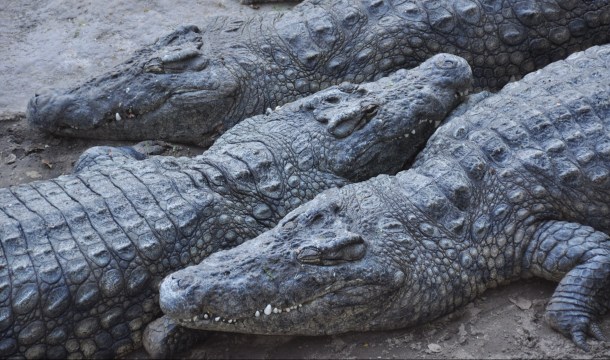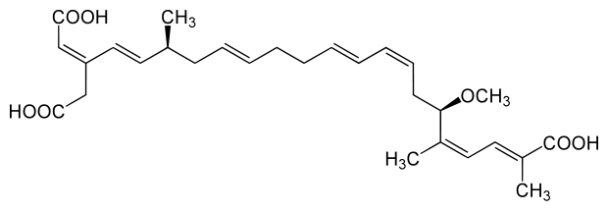People that do postmortem work see and hear a lot of weird stuff. The myriad ways people try to harm themselves or others is truly impressive at times. We also get a lot of “someone done them in” calls when a loved one dies, presumably because they watched CSI the night before – we call it the “CSI effect.” But truth be told, homicidal poisonings are fairly rare. As I talked about in the post “Homicidal Poisonings: Not Common, but Watch Out for the Chocolate Cremes“, poisoners have to put a bit of work into it, to research and procure the poison, then find ways to administer it undetected. It’s not for the lazy, rather the cowardly. So imagine my surprise when I saw this headline in January 2015:
My reaction
The fact is though, I wanted to believe this. I love conspiracy theories. Remember the post about JFK being killed by a poisoned arrow? Myths are so much more interesting than reality, which is why so many gain traction, but at the end of the day reason takes over.
Back to the headline. In early January 2015, after a funeral for a small child in Mozambique, mourners gathered and drank pombe, an alcoholic beverage (beer) made from malted grains, that had been prepared by the deceased child’s mother. The following day, hundreds had clinical signs of poisoning, with the final death toll reaching 75. A mass poisoning is certainly suspicious, but the interesting part is the initial culprit: an intentional poisoning by crocodile bile.
Bile is vile stuff. It is continuously produced in the liver, then stored in the gall bladder, for aid in digestion of fats in the small intestine. This is why people who have their gallbladder newly removed stay away from fatty foods, or else risk diarrhea and other liquidy excretions. Bile is mostly water, but also contains bile acids, and the bile pigment bilirubin – the focus of my PhD research – and ranges in color from green to brown, and generally smells repulsive. Of all the postmortem specimens I’ve worked with (i.e. all of them) it ranks up there as one of my least favorites. It concentrates down to an oily sludge and is hard to work with. On the plus side it is forensically useful, as many opiates and opioids are detectable in it.
It’s nasty stuff, certainly, but poisonous? I wouldn’t drink it. Lethal? Hardly. The roots of crocodile bile as a poison, in central and east African countries like Mozambique, is grounded in witchcraft. The majority of the population in countries such as Mozambique and Zimbabwe believe in witchcraft, uroyi or ubutakati, as a sinister preternatural force. This belief is instilled at the earliest ages, being told of witches using recognizable objects to carry out their malevolent mischief, such as crocodile bile. It is told that bile from a crocodile’s gallbladder is so poisonous, that a tiny amount applied to a fingernail then dipped into a beverage, will cause the victim to experience severe abdominal pain and death within 24 hours. (1, 2)
Common sense, and a bit of knowledge, tells us this can’t be possible, nonetheless toxicity studies have been carried out. Crocodile bile administered to both mice and baboons results in live animals with no ill effects (2). So now we’re left with “what killed 75 people?” They obviously didn’t drop dead for no reason. Thankfully, we have more modern analytical tools at our disposal in the 21st century than the 19th and 20th, and the culprit has been identified as something familiar to faithful readers: Bongkrekic acid.
I first wrote about bongkrekic acid in regards to “Toxic Tempeh” – which you should totally read, hint, hint. Bongrekic acid is produced by Burkholderia cocovenenans, an aerobic gram-negative bacteria that is associated with food-borne poisonings and multiple deaths annually. Toxicity arises due to its inhibition of ADP/ATP translocase, a transporter protein that shuttles ATP out of the mitochondria and into the cytoplasm. ATP is our body’s energy currency, and bongkrekic acid is literally robbing it of fuel.
From a clinical viewpoint, toxicity manifests within a few hours of ingestion and presents with abdominal pain, general discomfort, sweating, fatigue, and eventual coma. Death can occur within 24 hours. There is an initial phase of hyperglycemia, and a complete elimination of glycogen in the liver, followed by a fatal hypoglycemia. To break it down, glycogen stores in muscle and the liver is our secondary long-term energy storage unit, with fat being the primary. When needed, glycogen is broken down into glucose, which we use for fuel in all parts of our body. When our glycogen stores in the liver are broken down to glucose, creating an excess in the blood (hyperglycemia), it is usually consumed very quickly. When we need more glucose, the liver is called upon but is sold out, resulting in sweating, shaking, a few seizures, then death from hypoglycemia.
It’s not pretty way to die, but in this case it sure didn’t involve crocodile bile, a maniacal poisoner, or witchcraft, but the pombe (beer) was. In analyses performed by the US Food and Drug Administration on samples of the pombe, fatal concentrations of bongkrekic acid was confirmed. Analysis of the corn flour used to prepare the pombe found the bacteria Burkholderia cocovenenans, suggesting the mechanism by which the bongkrekic acid made its way into the pombe. The intriguing thing about this mass poisoning in Mozambique is that prior, intoxications were isolated to south-east Asia. The arrival in Africa is new, and likely the result of increased trade world-wide, allowing microorganisms to be jet setters. (3)
Mystery solved
References:
- [FREE] Nyazema, N.Z. “Crocodile Bile, A Poison: Myth or Reality?” Central African Journal of Medicine 30.6 (1984): 102-103.
- [FREE] Nyazema, N.Z. “Crocodile (Crocodylus Niloticus) Bile Acids and Arrow Poisons” Central African Journal of Medicine 31.6 (1985): 114-116.
- Falconer, Travis M., Sara E. Kern, Jennifer L. Brzezinski, James A. Turner, Brian L. Boyd, and Jonathan J. Litzau. “Identification of the Potent Toxin Bongkrekic Acid in a Traditional African Beverage Linked to a Fatal Outbreak.” Forensic Science International 270 (2017): e5-e11.

Crocodiles, from our Disney Animal Kingdom “Wild Africa Trek.”





Truly fascinating, although I enjoy all your posts…
Thank you so much!
Interesting stuff. The physiologic consequences of this poison seem to parallel the process of life-threatening diabetic ketoacidosis (DKA), in which insufficient insulin leads to unopposed glucagon-stimulated glycogenolysis (as with this poison), but the biggest risk in DKA is not hypoglycemia, but instead the eventual metabolism of fatty acids (when all the glycogen is gone), leading to ketone production, and eventual ketoacidosis, with serum pH dropping below 7.0 and resulting in general enzymatic dysfunction. Is there evidence that this poison also causes ketoacidosis?
I did a cursory glance though the literature to find something concrete, but nothing popped up. I would guess though that you absolutely would have some form of acidosis. I think the end stage would be more similar to what we see in starvation ketoacidosis (and to a deggree alcoholic ketoacidosis) – an increase in acetone, beta-hydroxybutyrate >25 mg/dL, and low glucose.
That’s a great question, and thanks for reading!
Thanks. Now you’ve got me thinking more, and I now wonder if I went down the wrong biochemical path. My thoughts: Although the inhibition of the ADP/ATP translocase does not directly block the oxidative phosphorylation pathway within the internal membrane of the mitochondria (since oxygen is still available and the electron transport chain is un-interrupted), this inhibition does essentially decouple electron transport from the process of ATP production, not by blocking ATP synthase, but by preventing the substrate for ATP synthase (ADP) from getting into the mitochondrial matrix. In this way, an inhibited translocase would lead to consumption of all remaining ADP within in the mitochondrial matrix, after converting it to ATP via ATP synthase. The cell (cytosol) is subsequently starved for ATP, as you say, and scrambles to make energy in other ways. Glycolysis occurs in the cytosol, so the cell can still produce 2 ATP per glucose molecule using that pathway (hence the race to chew up glycogen), but glycolysis also produces 2 molecules of pyruvate; however, since the citric acid cycle is crippled (because it can no longer pass its reductive NADH electrons to the stalled electron transport chain), pyruvate can only be reduced to lactate (lactic acid) or trans-aminated to form alpha-ketoglutarate (a keto-acid). In this way, the poison actually acts (indirectly) very much like cyanide (which, as you know, blocks oxidative phosphorylation directly) by starving the cytosol of ATP, resulting in the above cytosolic acidosis, and general cell dysfunction and death. Hmm. Seems to make sense, but maybe tomorrow I’ll change my mind again.
I became a chemist, and not a biochemist, for a reason…. stuff like this. I’m glad you liked it and it gave you a problem to work through!
Is Burkholderia cocovenenans destroyed by heating or boiling?
I don’t know about Burkholderia c. specifically – I did look though – but in general boiling water (a full, rolling boil) for one minute kills or inactivates bacteria and viruses. Three minutes for higher elevations. These are the general recommendations for backpackers or people in emergency situations, like after natural disasters, floods, etc.
Shark Week showed how some scientists/shark experts are trying to use croc bile as a natural shark repellent. It seemed to be quite effective on the bull sharks they tested it on.